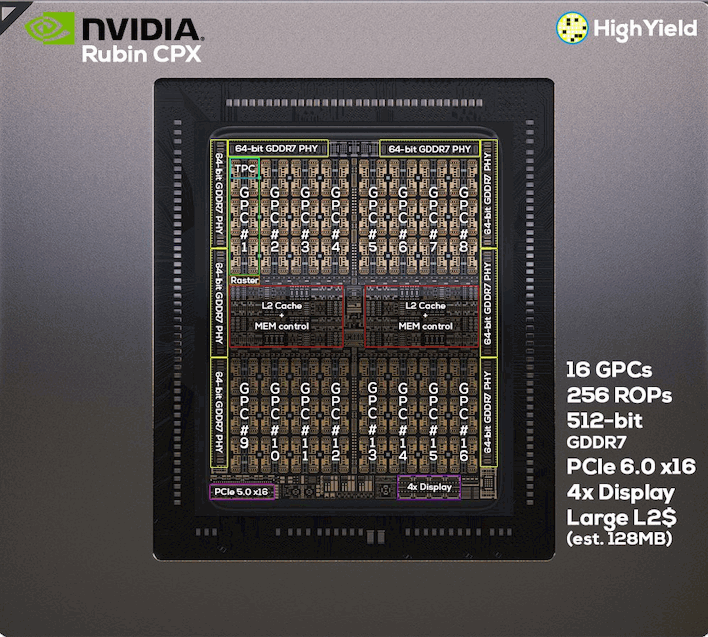Rubin CPX May Be The Secret Sauce Behind NVIDIA’s Next-Gen GeForce RTX 6090
It turns out that we weren't the only ones to have that thought. YouTuber High Yield, most well-known for his analyses of processor die shots and chip designs, has taken a close look at the picture NVIDIA published of a Rubin CPX die and come to the conclusion that it appears to retain raster backend hardware. These are the fixed-function components that are still used to perform the majority of graphics tasks, including compositing the image and sending it to the display pipes, where it is in turn sent to the screen.
There's no need for a pure AI GPU to have this hardware; it takes up die area that could be used for more tensor processors, and it serves no purpose in a pure AI compute accelerator. Chip companies love nothing more than the ability to re-use a chip design across product lines, though, and NVIDIA still sells a lot of graphics processors—products that absolutely do still need raster graphics hardware and display pipes that would normally be omitted from an AI GPU.
High Yield's analysis of the chip shot results in a processor with 16 Graphics Processing Clusters, yielding a full die of 256 Streaming Multiprocessors (SMs). He also interprets the die as having fully 256 Raster Output Pipelines (ROPs) on a 512-bit GDDR7 memory interface, as well as four display pipes and a PCI Express 6.0 x16 connection to the host bus. This is a truly massive chip; to put things in perspective, the full GB202 die used in the GeForce RTX 5090 "only" has 12 GPCs and 192 SMs, with 170 ROPs active.

We can reasonably assume that NVIDIA will use imperfect Rubin CPX dice for our hypothetical GeForce RTX 6090, much as it did for the RTX 4090 and RTX 5090. If we assume NVIDIA disables two full GPCs, we're still looking at a GPU with 28,672 CUDAs and 224 ROPs, absolutely dwarfing the GeForce RTX 5090 with its 21,760 CUDAs and 176 ROPs. Assuming no architectural or clock rate differences, that's still a more-than-30% uplift in GPU performance gen-on-gen, not accounting for other as-yet-undisclosed architectural updates.
The largest gains in performance going from the GeForce RTX 3090 to the GeForce RTX 4090 were down to a massive increase in the compute density of the chip, and the GeForce RTX 5090 doubled down, creating a truly enormous GPU. It's entirely possible that NVIDIA could be preparing the Rubin CPX as the GeForce RTX 6090, but if so, we have to expect another price increase, as this would simply be a titanic GPU.


